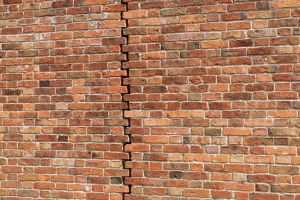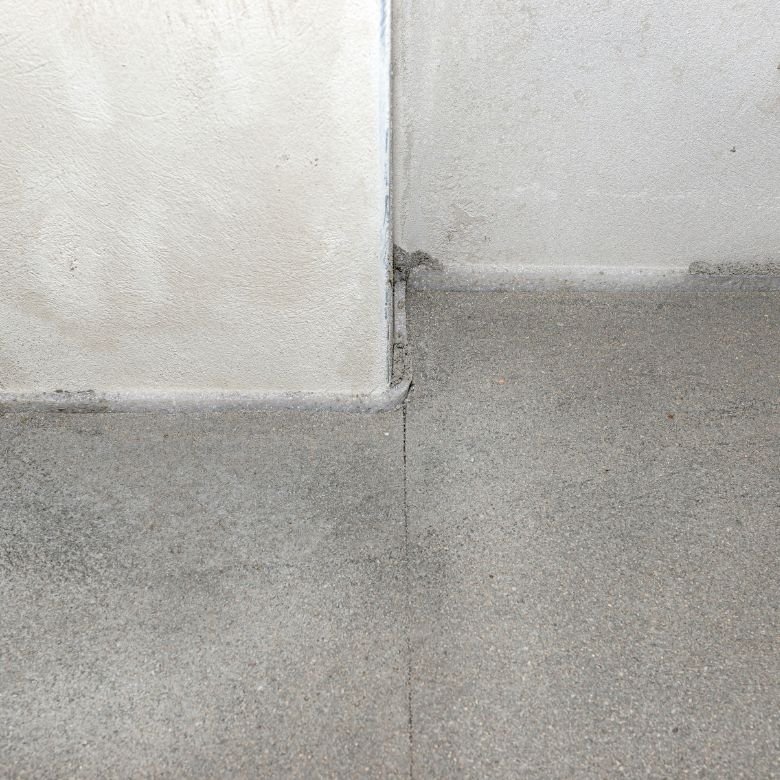A situation where a building’s structural elements tightly adjoin each other is undesirable. It may cause unnecessary stress and, consequently, even cracking of walls or floors. How to avoid that? Professionals use expansion joints. What are expansion gaps and how can they maintain a building in good condition for a long time? Read our article and find out!

What is an expansion joint?
An expansion joint, also called expansion gap, is a narrow space left between two elements of the building. Such gaps often occur between a concrete screed and a wall or between two walls or floors in different rooms.
Expansion joints are used at the connections of structural elements made of different materials and having different properties, such as susceptibility to shrinking and expanding under the effect of heat. Examples include areas where a so-called floating floor made of wooden panels interfaces with ceramic tiles. Due to the way the panels are laid, the wood continuously “works” and slightly changes its location. The expansion joint is there to enable that; if we use it, we do not need to worry that our floor will start cracking when affected by stress.
Why do we use expansion gaps in construction?
Expansion joints in flats and houses are used for a reason: they help to maintain the walls and floors in good condition. All structural components of a building are exposed to stress, deformations and slight displacements. These come from the forces that affect the walls, foundations and floors, or from changes in temperature. They are something natural and safe, but only provided that we give the building components some space for transferring these loads. This is what the expansion joint is used for in a building; with that gap, any processes taking place within one element do not affect the others. This prevents cracking and other damage that occurs under the effect of forces acting on wall or floor sections.

Most popular expansion joints used in flats
Expansion joints can be classified into structural, thermal, technological, and anti-vibration joints. In construction, the first of these types is used most often. Structural expansion joints are supposed to separate solid fragments of a building and prevent load transfer.
Expansion joints in flats can be additionally divided into:
- isolation expansion joints that are located at the wall-floor interface and are to prevent sound transmission and floor cracking; they are used in smaller rooms;
- perimeter expansion joints that complement the isolation joints in larger rooms having more than 30 m2 in area or more than 6 m in length; these gaps are made in the screed by dividing it into squares or rectangles with a side of up to 5 m.
How to properly make an expansion gap?
An expansion joint made by the wall does not mean that our interior will include bad looking gaps. Expansion gaps are made in concrete or cement screed, and if they are situated at the interface of a wall and a floor or a plank floor and tiles, we can cover them with a profile. What is important, the gaps must be properly filled. The filling can be made of styrofoam, mineral wool, or a special backing rod. For bigger rooms, where perimeter expansion joints are made, the expansion gap should be filled with a pliable joint filler. A polyurethane (PUR) foam will do a good job here. It has good thermal insulation properties, is vapour permeable, and can be precisely put into small gaps. When choosing an appropriate PUR foam, it is worth selecting well-proven suppliers such as the PCC Group. It offers a range of high-quality foams that will work well in various construction applications.
- https://theconstructor.org/concrete/expansion-joint-concrete/25161/
- https://www.re-thinkingthefuture.com/architectural-community/a7984-expansion-joint-in-buildings-everything-you-should-know/
- Fisher, J.M. (2005). Expansion Joints: Where, When and How. Modern Steel Construction, April 2005.